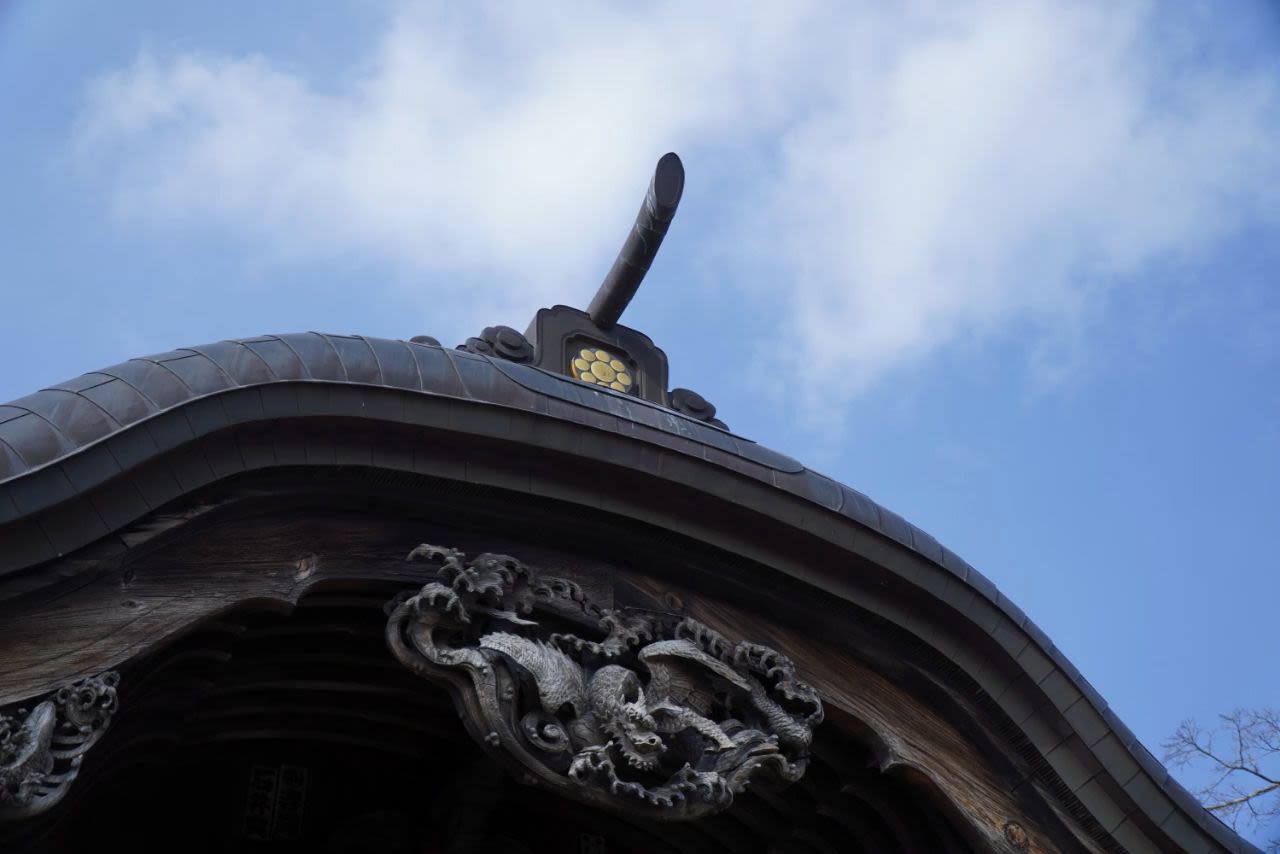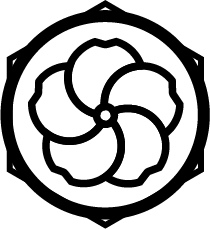Shohatsu Jinja
A Legacy in Structure

Carving a piece of history
The roof of Shohatsu Jinja tells a story spanning across time and memory
The sun blesses in abundance along coastal Fukushima with its rays caressing the intricate wood carvings of the Shohatsu Jinja. One is mesmerised at the juxtaposition of dainty wooden carps with the grandiose structure of the roof itself. Yet, it is just another morning in Futaba.
The art of carving found utterance in Japan only around the 6th century with the arrival of Buddhism. Some of the earliest gifts from the Korean court to Japan included a stone image of God Miroku which finds its roots in Buddhism. Wooden images soon followed and Japanese craftsmen turned both materials into canvases.
However, inspite of woodwork gaining popularity, portraiture was seldom seen in practice. One of the examples is the seated wooden figure of Tokugawa Ieyasu (first shōgun of the Tokugawa Shogunate and one of the three 'Great Unifiers' of Japan) in the Shiba Tōshōgu Shrine in Tokyo. The strength of the Japanese craftsmen instead lied in decoration and in small objects rather than representation or large structures.
This rarity in portraiture connects to the Japanese idealogy of looking at nature and not the person. Therefore, the representation of the surroundings can often provide a deep insight into the subject.
At Futaba's Shohatsu Jinja, the roof hides within itself many intriguing elements which gives a sneak-peak into the history and the philosophy of the shrine.
Deep-dive into the Roof

A Flying Dragon
Dragons are believed to be holder of spiritual objects in Japan. They are also revered as water deities.
One of the striking differences between a western dragon and an eastern dragon is the fact that the former is almost always shown with a pair of wings. In Japan and the east however, it is more popular for the dragon to be wingless and rather serpentine.
While wingless dragons are a common feature in Japanese shrines, Shohatsu Jinja has a winged-dragon (応龍 | Yinglong) on its roof instead. Although reasons for its presence are unknown and the shrine priest Takakura attributes it to the 'sensibility' of the sculptor at the time, it is not a complete stranger to Japan. An example of a winged-dragon around the period of shrine's construction in 1791 can be found in the works of Utagawa Kuniyoshi, one of the last great masters of Japanese ukiyo-e style of woodblock painting in 19th century.

Utagawa Kuniyoshi (1798-1861)「応龍」(Yinglong/ Japanese Sea Dragon)
Utagawa Kuniyoshi (1798-1861)「応龍」(Yinglong/ Japanese Sea Dragon)
Carp

Carps were first introduced to Japan in Niigata Prefecture in 1st Century CE from China where Carp farming dates back to 5th Century BCE. A famous legend goes that a school of Carp decided to swim against the Yellow river in China and finally the last one who reached the top of the waterfall was transformed into a golden dragon.
The grit shown by the carp became a symbol of perseverance over resignation. The 2 carps on the side of the roof at Shohatsu Jinja leading to the flying dragon at the centre is said to be symbolic of this.
While carps and dragons are recurring motifs, there are other animals that can also be seen at Shohatsu Jinja.
Cranes

In Confucianism, cranes are believed to have long life. In Japan, it is believed that cranes live for a thousand years. It is common to see cranes around pines as a motif in art and sculptures. Both of them symbolise longevity as pine trees do not shed their leaves during winter.
Horses

Horses are by far the most abundant motif at Shohatsu Jinja. As part of Soma clan in medieval Japan, the festival of Soma Nomaoi is of extreme importance.
Started over a 1,000 years ago by Taira no Masakado, horses were released in then-Shimosa province (Northwestern Chiba Prefecture) to represent enemy soldiers in military drills. Since Taira no Masakado is considered to be a forefather of the Soma clan, this event runs till date in form of 400 horseback warriors parading across the Minamisoma town. It is this legacy that has made the horse an indispensable symbol of the region.

Soma Nomaoi Festival (2005)
Soma Nomaoi Festival (2005)
The Shrine Crest

The shrine crest of Shohatsu Jinja is the same as Soma family crest. The crest depicts Kuyō (from the Sanskrit term 'Navagraha' in Hinduism) which represents 9 heavenly bodies. It can also represent the Moon, the Pole Star and the Big Dipper constellation.
Historically, the original name of Shohatsu Jinja had the word 'Myōkenmiya' which is the Buddhist deification of the Pole Star. This happened due to syncretism between Shintoism and Buddhism that existed in Japan until the Meiji period that began in 1868. During this time, laws were passed to separate the Shinto shrines from Buddhist temples (神仏分離 | Shinbutsu Bunri). While the shrine name changed to Shohatsu Jinja, the symbolism of the Pole Star on the crest is a remnant of a bygone era.

The Guardians
Much like other shrines, Shohatsu Jinja too has four guardians of the four cardinal directions. Rooted in Chinese beliefs, these may also symbolise 4 different seasons or 4 divisions of a day.
The north is protected by a tortoise called 'Genbu' and the south is protected by a red bird called 'Suzaku'. The east and west are respectively protected by a dragon called 'Seiryu' and a white tiger called 'Byakko'.
That which is Sacred
A striking feature of Shinto shrines is the fact that they possess certain sacred objects which can be seen only by the Chief Priest of the shrine.
At Shohatsu Jinja, the inner hall of the shrine houses a sacred mirror, a gold coin from Tenmei era (1781-89) and a sword. While the shrine possessed around 300 swords until second World War II, they had to be given up for weapons production as they were sources of metal.

The inner hall of Shohatsu Jinja
The inner hall of Shohatsu Jinja
The ebb and flow of time has brought in many tides on the shores of Shohatsu Jinja. This picture was taken before the events of 2011 took place.
While the roof was kept intact, the main shrine underwent complete reconstruction until 2019 with the help of a crowdfunding campaign.
The shrine, or as the Chief Priest Takakura would like it to be called as - 'Shohatsu Jinja', is one of the first structures that was rebuilt in new Futaba. It doesn't echo grand tales of invasion or sacrifice but stands as a testimony to will and perseverance. It is a lesson in going back to one's roots when things around seem to be falling apart.
It is a story of faith and of a people who are determined to write their own destiny, no matter how many waves try to wash it away.



